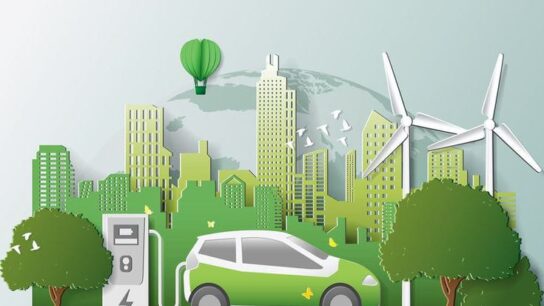Powering Tomorrow: The Crucial Role of Renewable Energy in Shaping a Sustainable Future.
Introduction:
In the pursuit of a sustainable future, the role of renewable energy emerges as a pivotal force reshaping the global landscape. As the adverse impacts of climate change become more evident, a transition towards renewable energy sources becomes not just an option but a necessity. This exploration delves into the multifaceted dimensions of renewable energy, analyzing its impact on the environment, economy, and the overall quest for sustainability.
1. Environmental Impact of Renewable Energy:
Renewable energy, derived from sources such as solar, wind, hydro, and geothermal, offers a cleaner alternative to traditional fossil fuels. The reduction in greenhouse gas emissions is a cornerstone of its environmental impact. Solar and wind energy, in particular, produce electricity with minimal carbon footprint, contributing significantly to mitigating climate change. The positive externality of reduced air and water pollution further underscores the environmental benefits of embracing renewables.
2. Economic Opportunities and Job Creation:
The transition to renewable energy not only addresses environmental concerns but also unlocks substantial economic opportunities. Investments in renewable technologies spur innovation and create jobs across various sectors. From manufacturing solar panels to installing wind turbines, the renewable energy industry fosters employment growth. Local economies benefit from the development of renewable projects, creating a ripple effect that extends beyond the energy sector.
3. Energy Independence and Security:
Diversifying the energy mix with renewables enhances energy independence for nations. Relying on domestic renewable resources reduces vulnerability to geopolitical tensions and fluctuations in fossil fuel prices. The decentralization of energy production through solar panels and wind farms contributes to a more resilient and secure energy infrastructure.
4. Technological Advancements and Storage Solutions:
Renewable energy technologies have witnessed rapid advancements, making them more efficient and cost-effective. Innovations in energy storage solutions, such as batteries, address the intermittent nature of solar and wind power. Effective energy storage not only ensures a stable and reliable power supply but also enables the integration of renewables into existing energy grids.
5. Challenges and Barriers to Adoption:
While the benefits of renewable energy are clear, challenges persist in its widespread adoption. Issues such as intermittency, energy storage limitations, and initial investment costs hinder seamless integration into existing energy infrastructures. Addressing these challenges requires continued research, development, and collaborative efforts between governments, industries, and research institutions.
6. Community Engagement and Public Awareness:
Engaging communities and raising public awareness play a crucial role in the successful transition to renewable energy. Local initiatives, educational programs, and public discourse foster understanding and support for renewable projects. Community involvement in decision-making processes ensures that the benefits of renewable energy are equitably distributed and that the transition is embraced at the grassroots level.
7. Government Policies and Global Cooperation:
Government policies and international collaboration are instrumental in accelerating the transition to renewable energy. Incentives, subsidies, and regulatory frameworks that promote renewable technologies create a conducive environment for investments. Global cooperation is essential to address cross-border environmental challenges and ensure a collective commitment to sustainability.
Conclusion:
As we stand at the crossroads of environmental stewardship and sustainable development, renewable energy emerges as a beacon of hope. Its role extends beyond being a cleaner energy source; it is a catalyst for economic growth, a guarantor of energy security, and a symbol of our commitment to a sustainable future. The challenges are real, but so are the opportunities. Through concerted efforts, technological innovations, and a collective will to change, we can harness the power of renewable energy to shape a future that is not just powered differently but powered sustainably.



